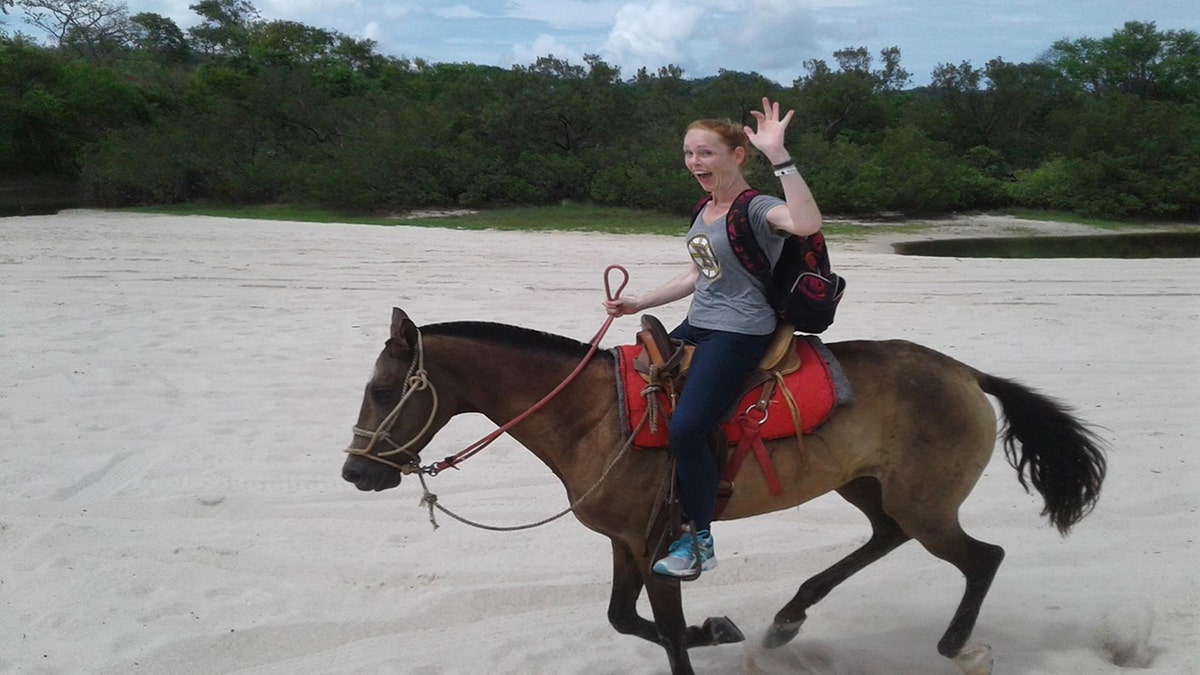Slipped discs from yoga pose caused life-changing spinal condition
Doctors told a U.K. woman she’s at risk of developing a rare spinal condition due to a yoga pose she did years ago, according to news agency SWNS.
Terrilyn Griffiths, 44, from Lowestoft, Suffolk, exhibited early signs of cauda equina syndrome (CES, a dangerous form of spinal nerve damage) in January 2024 when an MRI revealed slipped discs in her back, stemming from yoga-induced back injuries.
“I was showing my ex’s kids how to do a standing bridge pose when my back gave way,” she said of the initial incident in 2021.
SITTING STILL FOR THIS AMOUNT OF TIME IS RELATED TO HIGH RISK OF NECK PAIN, STUDY SAYS
At first, Griffiths “thought nothing of it,” but then she began experiencing back pain two weeks later, often feeling like she “would collapse at the waist.”
“It didn’t help that I worked a laborious job, and I had to carry heavy materials around all day,” Griffiths, who worked in a factory at the time, told SWNS.

Terrilyn Griffiths, 44, was teaching kids how to do a bridge yoga pose when she first injured her back in July 2021. (Terrilyn Griffiths / SWNS)
She pushed through the pain for six months until it subsided, leading her to think it had eventually “healed on its own.”
WOMAN WITH 5% CHANCE OF SURVIVAL AFTER SKI ACCIDENT MAKES ‘MIRACLE’ RECOVERY
But the pain resurfaced almost two years later in June 2023. “I had a physical week at work, and my back went right before I had a horse-riding lesson,” she said.
Griffiths eventually went to the doctor in January 2024, when she learned she had early signs of cauda equina syndrome, which can cause pain, weakness and incontinence, per Cleveland Clinic.
“CES is traumatic and life-changing … it has taken my life away.”
Doctors referred the woman to a physiotherapist, but Griffith said “nothing has helped.” She is not eligible for a corrective surgery because she doesn’t present any “red flag symptoms” characteristic of the condition.
CLICK HERE TO GET THE FOX NEWS APP
During this time, Griffiths was experiencing dexterity issues in her hands, weakness in her hip and groin area, altered sensation in her saddle region and a semi-paralyzed bladder, per the SWNS report.
She also “struggles to walk” and is unable to travel more than a single flight of stairs without having pins and needles.

Terrilyn Griffiths is no longer able to ride horses or hike due to the painful condition. (Terrilyn Griffiths / SWNS)
After working with the physiotherapist for nine months doing small exercises, Griffiths said the pain across her back only got worse.
CLICK HERE TO SIGN UP FOR OUR HEALTH NEWSLETTER
“CES is traumatic and life-changing,” said Griffiths, who is now housebound.
“Not many people seem to know much about it, which has made getting the right treatment harder … and now it has taken my life away.”
“I feel as if there’s little hope for me in the future,” she added.

“I have started looking into getting the surgical procedure elsewhere — maybe abroad — to decompress the area,” said Griffiths. (Terrilyn Griffiths / SWNS)
According to the U.K.’s National Health Service, if the condition is not addressed early, it can result in life-changing injuries.
Griffiths is now raising funds for private consultations, travel expenses and support at home.
For more Health articles, visit www.foxnews.com/health
“I have started looking into getting the surgical procedure elsewhere — maybe abroad — to decompress the area,” she said. “But I wish more people were more aware of incomplete and partial cauda equina syndrome.”
“Perhaps things would have been different for me.”





